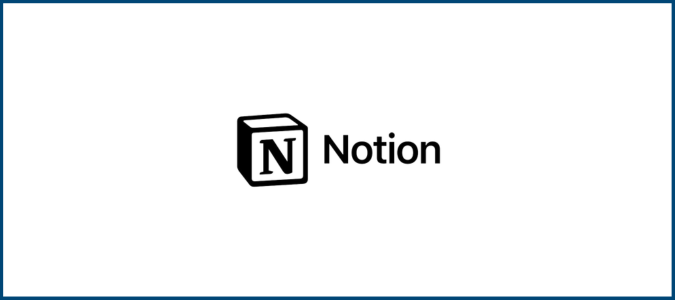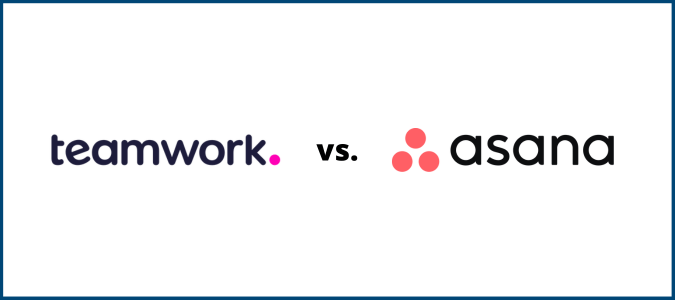Requirements management software helps you document your business processes and collect everything your organization may need to access in one place. Confluence delivers mightily in this category, giving you team a convenient platform on which they can store and access SOPs, commonly used documents, OKRs and goal tracking, and more.
One of the best features of Confluence is its ability to sync with other Atlassian products (like Trello and Jira Software) or other software your team is already using, giving you clean visualizations of your goals and requirements mapped to your actual work. You can try any of the upper subscription tiers of Confluence for free on a seven-day trial period.

Our Take on Confluence
Our favorite aspect of Confluence is how easy it is to use. We expect that most of you will be able to sit down and start using it at a basic level almost immediately. You certainly will want to spend some time learning how to use its more advanced features at some point, but the ability to use it without a lot of preliminary work is a real confidence builder.
We also appreciate the use of visual data throughout the Confluence interface. Your team members can find information quickly and easily on this platform and, when they need additional detail, they can drill down through the visual data to find precise information.
We expect that the members of your team will be willing to use Confluence, even if it involves some changes to the workflow process. If the software was difficult to use or if finding information was tough, we’d imagine you’d see more resistance regarding workflow changes from your team members.
The fact that Confluence is part of the Atlassian family of software products is another significant advantage. That means this software syncs with Jira Software and Trello naturally. Atlassian also offers excellent security features, ensuring that your data is protected through encryption. Confluence gives you as an administrator the ability to determine exactly which of your team members can access sensitive information as a helpful security measure on top of that.
Confluence’s price point is competitive, especially if you are operating a small or medium sized business. Its price is lower on average compared to other similar software and it even includes a free-forever plan, allowing a small team to use a basic version of the software without ever having to pay. You can later shift to one of the paid tiers as you need more features or as you grow.
Having said that, if you need some advanced features that go beyond the basics, you may be better served with one of the competitors listed below. For starters, Confluence does not offer features related to tracking the time you are spending on projects. Nor can it track individual team member workloads or support task and item dependencies.
Some of Confluence’s competitors combine requirements management features with project management. These competitors have a bit more versatility than Confluence itself provides, as it sticks primarily to requirements management. That being said, a combination of Confluence and Trello for simple project management or Jira Software for software and product development is an effective one-two punch.
Confluence’s feature set for managing requirements, objectives, and company documentation is impressive on its own. To learn more about all the pros and cons of this software, check out our full, detailed Confluence review.
Confluence vs. Monday.com

Monday.com is a well-known project management platform that can easily handle requirement management, too. It does an excellent job in providing a visual representation of your projects, giving your team a chance to jump in and use it quickly, at least at a basic level.
Where Monday.com becomes a better choice than Confluence is through its project management tracking capabilities. With Monday.com, you can see things like upcoming deadlines, workloads for individual team members, and the reliance of certain tasks on other tasks. You can combine that with its ability to store documents and objectives to get a complete package in one platform, whereas Confluence is going to need to integrate with a PM-focused platform to achieve the same.
Confluence does have a lower price point than Monday.com per user. Both packages give you a free trial period to test the service, which is helpful, but Monday.com gives you 14 days to try it out compared to just seven days for Confluence.
Read our Monday.com review to get a full breakdown of this software package in even greater detail.
Confluence vs. ClickUp

ClickUp is one of the most versatile requirements management and project management software tools available. We appreciate the ability to configure ClickUp in whatever manner fits your needs best.
Track items and aspects of requirements through an array of views, like timelines and boards. Agile teams in particular will appreciate the ability to set up sprints and handle both projects and requirements in a way that’s in line with their preferred PM methodology. You can also set up task dependencies and recurring checklists, plus assign comments to team members to make sure nothing is missed.
With all these features and customization options comes a slightly steeper learning curve than Confluence, though. Ultimately, Confluence users report having an easier time navigating the basics initially than ClickUp users have. For simple requirements management, Confluence is the better choice, but ClickUp is a powerful package for Agile project teams and organizations with plenty of remote workers.
To learn more, check out our full ClickUp review where we provide extensive detail on all of ClickUp’s features.
Confluence vs. Jira Software

Jira Software isn’t really a replacement for Confluence so much as it is a complementary product from Atlassian that can integrate with it beautifully.
Jira Software is aimed at project management for development teams. As such, it has great features for bug tracking, versioning, and managing the dev lifecycle for individual projects or an entire portfolio. But it lacks much built into it in terms of documentation and requirements management.
Hence, it’s usually a good idea to pair Confluence with Jira Software in order to cover all your bases. Confluence makes it easier to create a knowledge base that your team members can access regularly. It organizes these documents and makes your library searchable, ensuring users can find exactly what they need quickly.
One big difference between these two platforms is the ease of getting started with the software and comfortable using it. We believe you will be able to pick up on the basics of using Confluence relatively quickly, thanks to its emphasis on clear interface design. With Jira Software, the learning curve is significantly steeper. Expect to have to dedicate some time to training before you can sit down and start using Jira Software, unless your team is already used to software that’s focused on developer needs.
We’ve put together a detailed Jira Software review if you would like to learn more about its feature set and capabilities.
Confluence vs. Trello

Yet another offering from Atlassian, Trello has some requirements management features built into it, but is primarily a simple project management platform.
Both Trello and Confluence are incredibly easy to use. You and your team members should be able to pick up the basics with both software packages in short order. In fact, some reviewers believe Trello is too simplistic, offering basic features that only small teams can use effectively.
But if you’re just looking for a platform that delivers easy task management through project board, commenting, and assignments, Trello is a solid choice that syncs perfectly with Confluence’s requirements management capabilities. These two platforms offer multiple integrations beyond its easy connection with other Atlassian apps. Share data, information, notifications, and more between Trello, Confluence, and other popular tools like Google Drive, Slack, Figma, HubSpot CRM, and many more.
Both Trello and Confluence offer lower-than-average pricing versus their competitors, too. You can implement both tools into your organization and still come out ahead, especially if either platform’s free-forever plan can do the trick.
To learn even more about Trello’s strengths and weaknesses, read through our full Trello review.
Confluence vs. Smartsheet

Smartsheet offers a bit more versatility than Confluence, which can be a significant benefit when your team needs extra features beyond documentation storage and management. Smartsheet provides features for managing projects, resources, and entire portfolios, in addition to its capabilities for requirements management.
Excellent security is a key feature in Smartsheet. Data in Smartsheet is encrypted and the software employs two-factor authentication (2FA) to protect against unwanted logins. Smartsheet offers a platform in compliance with HIPAA, GDPR, and other key data protection standards.
While Smartsheet is largely focused on project management, it offers a ton of guides and templates for using the platform for requirements management. Find convenient prebuilt Smartsheet interfaces for specifying, gathering, and tracking requirements for projects, including ones specialized for specific projects like software development.
We’ve put together a detailed review of Smartsheet to help you decide whether this package is worth considering for your team’s needs.
Confluence vs. Teamwork

Teamwork delivers excellent project and task management features, helping your team automate your workflows and track progress easily. It’s easy to learn how to use, but full of advanced features you can tap into as you get acquainted with the software.
That being said, requirements management isn’t a perfect use case fit for Teamwork. There aren’t natural features for gathering requirements for a project, though you can use guest access and collaboration features to bring in stakeholders to define them before starting project work. Fortunately, Teamwork’s interface and features for milestones and sprints can help you track requirements through a project’s lifespan.
We like Confluence’s security features better than what Teamwork offers. Confluence’s parent company, Atlassian, always emphasizes security in its software packages. Teamwork, meanwhile, doesn’t even allow administrators to implement and enforce the use of two-factor authentication, for example.
We do like that both Confluence and Teamwork have strong free-forever pricing tiers. You can use the free tiers to test the software packages before deciding whether you want to upgrade, or if you really only need the basics from either platform. Teamwork limits you to five users in the free tier, while Confluence has a 10-user limit on its free-forever plan.
To learn more about Teamwork, check out our full Teamwork review.
Confluence vs. Asana

Asana allows you to use multiple different views for visualizing your projects, including Kanban boards, calendars, and timeline views. These can be adapted for tracking requirements during project work. And, Asana lets you save your custom-built interface for requirements management as a template, so you only have to build it once. Then, you can re-use it for subsequent projects.
While there’s nothing specifically built for requirements gathering, the software has several features that can help you accomplish this. Asana has solid guest access with permission control (its paid plans allow for unlimited guest accounts), allowing you to let clients, managers, and other stakeholders into the initial conversation. Add to that Asana’s forms and in-platform messaging and one meeting within Asana can take care of defining requirements at the start of any project.
Both Confluence and Asana offer free-forever tiers of the software that are useful for smaller teams. However, Confluence’s price points for its pay tiers are more affordable than what Asana offers on its upper-echelon plans. But, you may be able to get enough functionality out of Asana’s free plan, which still allows for unlimited tasks, projects, messages, and file storage.
Want to know more about this software? Read all about it in our detailed Asana review.
Confluence Alternatives in Summary
For versatile requirements management software, Confluence is extremely easy to use. Its interface is well-designed, allowing you to quickly decipher the most important aspects of your data. You can start using Confluence for managing project and organizational requirements with full confidence that your team will quickly get the hang of using it.
However, it is narrowly focused on requirements management. If you want software that combines requirements tracking with project management features, there are a lot of options. We recommend considering Monday.com for most users interested in PM software, or ClickUp if your organization is spread out with remote workers. Or, you can stay in the Atlassian family and unlock PM capability with Trello or project management software specialized for dev teams in the form of Jira Software.














